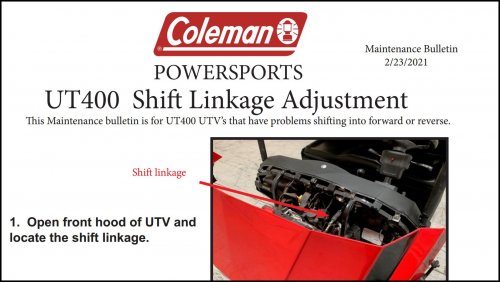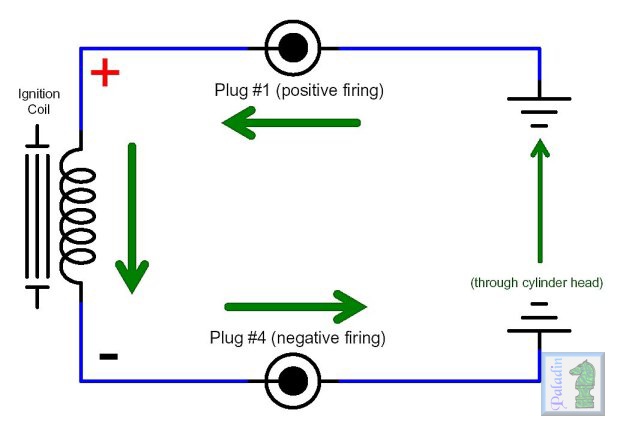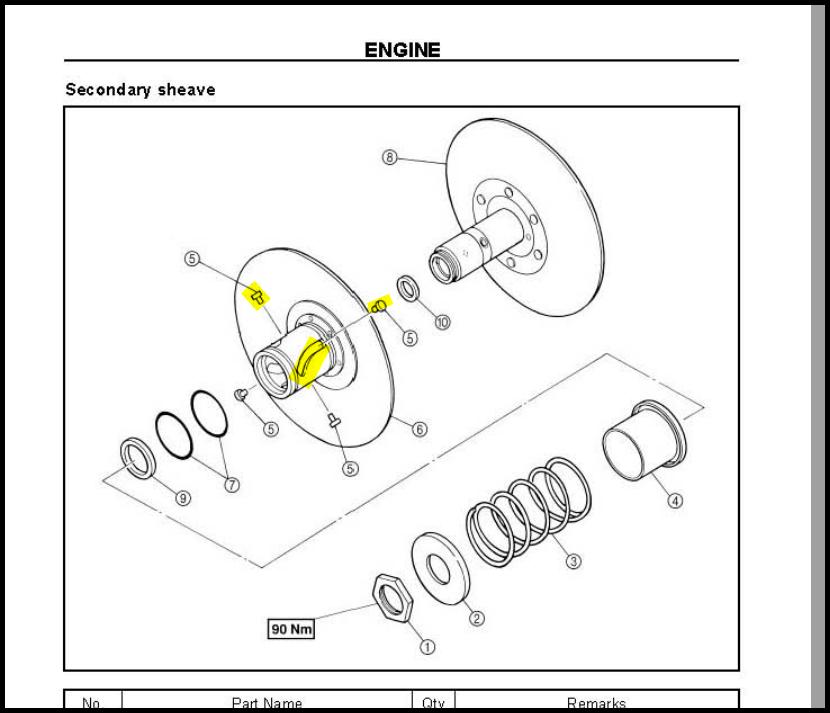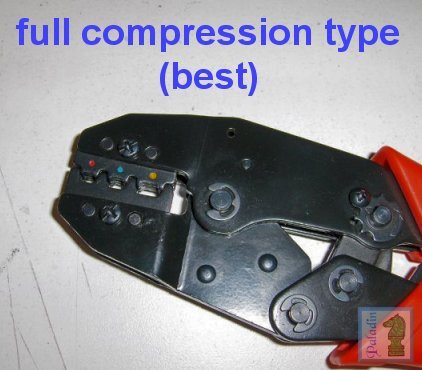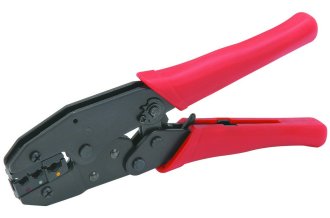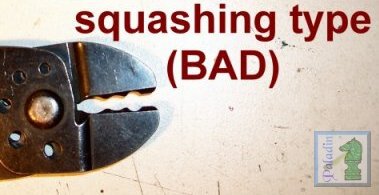-
Posts
350 -
Joined
-
Last visited
-
Days Won
49
Content Type
Profiles
Events
Forums
Gallery
Downloads
Community Map
Everything posted by cliffyk
-

Can anyone tell me if their MSU 500 F-PUMP cycles when...
cliffyk replied to IslandHopper's topic in Massimo UTV SxS Forum
The fuel pumps an the majority of these small EFI engines are not "controlled" externally--I.e. they have just one mission in life; which is to, when powered up, keep fuel line pressure at or about 3 bar¹ (43.5 psi)--if it isn't they run 'til it is. Have you tested the fuel pump, ignition coil, and injector individually to see if they are capable of doing what they are supposed to? If direct wiring shows them them to be operational the problem has to lie in getting power to them in normal operation. It would be quite a coincidence for them to all fail at once, but a Forrest Gump said "It happens". you could also connect a dedicated ground to each and see what happens; ground connections are often overlooked--and just because the engine cranks does not mean all low current ground paths are intact. ------------------------------------------------------------- ¹ - 3 bar is the standard pressure used for fuel injector delivery ratings. Most makers use it or near--39-40.5 psi is not an uncommon spec (Ford likes 39)--in their fuel systems. -

Can anyone tell me if their MSU 500 F-PUMP cycles when...
cliffyk replied to IslandHopper's topic in Massimo UTV SxS Forum
What model year is your MSU500? -
13 hours is about where mine started doing the same thing. I had developed a similar adjustment procedure using neutral as the reference. Tried this process last evening and it was very close to the setting my procedure came up with--been cold and rainy here today; haven't driven it yet... The F/R shift mechanism is in the transmission, a sliding dog collar on the counter shaft, in the crankcase. It is lubricated by engine oil and unrelated to the drive axles...
-

Can anyone tell me if their MSU 500 F-PUMP cycles when...
cliffyk replied to IslandHopper's topic in Massimo UTV SxS Forum
The "power to the ignition coil" should switch on and off while cranking the engine. The ECU cuts power to the coil when it's time to fire the plug--the collapsing magnetoc field in the coil primary generates the high voltage pulse in the secondary to fire the plug. If the voltage at the coii's primary is unwavering that is not happening. Have you tested the coil's secondary to see if there is a spark? DEpending on how the ECU uses the CKP it is possible that a bad sensor could prevent a spark. Most of these small engines have no cam position sensor and use the crank sensor to trigger the spark, this means it fire at each near TDC of the crankshaft but one of these firings is at he top of the exhaust stroke and does nothing. This is often called a "waste spark" ignition system. It is common in multi-cylinder 4 stroke/cycle engines to use one coil to fire two plugs on two cylinders that reach TDC at the same time by wiring them in series. wasted spark ignition -

Front and rear locking differentials, engine breaking
cliffyk replied to Abner's topic in UTV General Discussion
"braking" systems..."breaking" systems is what we don't want... -

Front and rear locking differentials, engine breaking
cliffyk replied to Abner's topic in UTV General Discussion
"excepting Alice"... -
Didn't know it had a mechanical governor--how quaint. Would have been the first thing I'd have suggested checking...
-
Did it strike you as odd that not a single aide or SS agent rushed in to assist? It's almost as though they are hoping he'd break his neck, so Camela can take over (my most recent recurrent nightmare)..
-
If it comes down to it you could toss the connector completely and use butt or better yet, barrel (bullet) connectors that can be easily disconnected if needed--though the latter seem to have fallen out of fashion, I no longer see them in the auto parts stores...
-
Often we have to forget about the ways things were, and make 'em better. Will the connection point for the switch's harness accept plain ol' 1/4" or 3/16" male spade terminals? Can I say that or should I say "terminals of colour" (TOC)? If so you could ditch the connector body and put new male terminals on each wire and connect them individually? It won't be as convenient, however you will be making sure ALL the terminals are crimped properly, and properly bedded in dielectric grease so the corrosion does not happen again. The main fuse block 30 A "accessory" section on my 2003 Suzuki Burgman 400 burned up, it was over $100 for a replacement--so I just bypassed the whole thing with an inline fuse: Sometimes you have to think on the other side of the box...
-
View File Outfitter-UT400-ShiftCable Adjustment I got this from Coleman, detailed instruction re: shift cable adjustment... I forgot to mention you will need two 22 mm wrenches for the cable lock nuts. I hacked up a couple of cheap "quality tools for less" combination wrenches using a cut-off wheel in an angle grinder: Kind of like "flare nut wrenches", good for light duty like this. Submitter cliffyk Submitted 03/19/2021 Category Coleman
-

2014 Bennche 700 EFI crew reverse problem
cliffyk replied to Lyonel Geary's topic in Bennche UTV SxS Forum
Just had a thought, reverse is generally a lower"gear" (a numerically higher ratio) than any forward gear--that means for any given vehicle load less torque being transmitted through the CVT. That lower torque requirement could show itself if a jammed up movable pulley face in the torque multiplier is also present, The spiral slots in the outer (movable) pulley hub are the Torque multiplier cams--the pins (p/n 5) are the cam followers) The torque spring (p/n 3) forces the pulley faces together, working against transmitted torque to keep the driven pulley effective diameter large and the variator (drive pulley) working diameter smaller (I.e. a "lower gear)--this happens while the variator centrifugal weights are also trying to make the variator pulley effective diameter larger. This battle between the two is part of what determines the overall CVT ratio. However when torque needed to accelerate the vehicle reaches a certain level the belt slips on the inner (fixed) driven pulley face but not on the movable face causing the outer pulley half to try rotate--if it can rotate the torque multiplier cam and its followers work with the spring to force the driven pulley faces further together to further increase its effective diameter (if not already closed completely) and thereby forcing the variator face apart decreasing its effective diameter--temporarily forcing a lower yet over all ratio until yet another equilibrium is struck. when vehicle torque demand falls off. This is why the assembly is called the "torque multiplier". If the outer multiplier pulley was jammed on its shaft unable to rotate and effect pitch diameter , a lower torque demand (as in reverse gear) could cause the belt to effectively loosen, slip in both sheaves , and squeal. 110% speculation, but its been 8-9 months, what else do we have? And I would bet "dollars-to-donuts" it's a CVT issue. Not sure I explained this fully or sufficiently clearly, if anyone has questions or comments let 'em fly... -

2014 Bennche 700 EFI crew reverse problem
cliffyk replied to Lyonel Geary's topic in Bennche UTV SxS Forum
My first thought when I read "belt squeals": is that the rubber band in the CVT is severely glazed-that's the only thing in there that can "squeal"--if the belts looks good I'd pull apart the variator (drive pulley--often and quite incorrectly called the "primary clutch")) and torque multiplier (driven pulley--often an d quite incorrectly called the "secondary clutch") and make sure all components in same meet their specs (primarily the roller weights in the variator; and spring, torque cam and cam followers in the multiplier. Though I really don't understand why such problems would be unique to reverse gear. -
^^^ this, make certain that "flooring" the accelerator pedal causes the same linkage motion at the carburettor, as does manipulating the linkage directly at the carburettor. If not then suspect the throttle cable and/or some deformation or blockage in the pedal mechanism...
-
I haven't seen mention of the oxygen sensor (in the exhaust pipe) in this discussion. A dead or dying O₂ sensor will generate a low, or no, output voltage; this makes the ECU think the engine is running lean, it compensates by adding fuel, I.e. making the AFR rich. This can happen without triggering an error code. For more (than you probably want to know) about O₂ sensors--including how to test them with a multi-meter and a propane torch--click here.
-
That looks like a good candidate for some aerosol contact cleaner, Q-tips, toothpicks and conpressed air. However I have on occasion poked around a bit inside the body with a dental probe and been able to find something that would release the terminals in connectors like that--typically they pull out from what is the bottom in your photo (the "business end")--there are specialty tools for disassembling these things. Search for "Tool Disassemble electrical connectors" on Amazon. I had a set years ago and it worked great on the connectors it fit, but as is common with real world perversity, most of the connectors I wanted to take apart were ones none of the "keys" fit. Sometimes there is a plastic locking tab holding the terminals into the body.
-
sometimes there's a plastic tab on the body, or a metal tab on the terrminal that lock things in place--however more and more in the modern world the terminals are moulded into the plastic body and not removable. I fall back to Q-tips ,toothpicks, a suitable solvent, and elbow grease on those.
-
The white-brown contacts provide (via the brown wire) +12V power to the lights, horn, brake lights, and the coil of the starter relay. 2.3 Ω is quite high , did thet measurement "include" the corroded connector? A modest 2 A load through that 2.3 Ω resistance would produce a 4.6 V voltage drop--leaving just 8.0 V (of a fully charged battery's 12.6 V) to "do the job". Obviously the corroded terminal needs to be replaced. In doing so make sure the wire is clean and shiny, and use some dielectric grease (SuperLube's PTFE grease is very good for this)--$6. at Home Depot--to "pot" then connection. Make sure you use a good crimping tool also, like this "full compression" tool from HF: This tool will create very reliable connections unlike those tools that just "squash" the terminal ferrule. . I suspect your recent manipulations of the wiring disturbed some poor connections and made them conduct. This is not uncommon, in emergency situations it can be, and has been for many, a viable action to get going again,,,
-
^^^this^^^ The codes display just like the clock display, but the colon (":") is dimmed out--they are easy to miss except that they do not change each minute--The EPS (Engine Protection System) warning light should be on if any error codes have been logged.
-

Massimo starts runs about 3 min dies wont start
cliffyk replied to SteveD916's topic in Massimo UTV SxS Forum
Try loosening the fuel cap for 10-15 seconds then re-try starting it--might not work but it's worth a try... -
Your wiring diagram provides the ignition switch contact "rules" for its various positions--you can test it by checking continuity with an Ohmmeter as shown below: Connect the Ohmmeter to the wires/terminals as shown and check the resistance with the key in the indicated position--it should be 0.0 Ω or no more than 0.2 Ω.. This procedure tests the switch at low voltage and current as used by the ohmmeter, however it will be a valid indicator of the switch's functioning properly... Note: this test is performed with the switch NOT plugged into to the vehicle. In "OFF" there should be 0.0 Ω between the black/yellow and white/black wires In "ON" there should be 0.0 Ω between the brown and white wires In "START" there should be 0.0 Ω between the black/white and brown, black/white and white, and brown and white. The "OFF" position connection of the black/yellow and white/black wires grounds the ECU when the switch is off--a safety precaution against static discharge no doubt. -cliff-
-
Joe, I likely overreacted--it is a topic I am a bit peevish about--on Labor Day of 2019 the family had a celebration of my accomplishment when my drunken 27-year-old step-grandson¹ stood in the centre of it all, and declared for all to hear; that he "didn't think it was that big a deal" His mother ad father very nearly died right there on the spot. My wife says I bring it up too often--she's probably right (why are they so damned right so often?)--but for me it represents the likely "end posts" of nearly 50 years of work and aspiration--it is an accomplishment I am quite, and no doubt overly; proud of... ---------------------------------------------------------------------------- ¹ - Whose life accomplishment after dropping out of UCF is being a part-time barmaid at Starbucks in Orlando.
-
I have never before in my life had the content and purpose of a post so poorly understood--must be getting old.
-
That's pretty much what I thought I said.. My specific point was that we (and I am as guilty as anyone) have been using the term "solenoid" to refer to both the electro-mechanical device on the starter motor that both causes the starter motor drive pinion to engage AND closes the heavy duty contacts (typically a copper disk and the terminal bolts heads) to switch power to the motor. This has caused confusion in the discussion. -cliff- (MSME MIT '71) PhD ME MIT 2019--how I spent the first three years of my retirement





